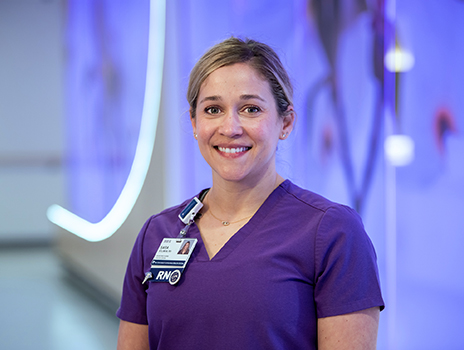- Home
- Types & Treatments
- Proton Therapy
- Your Care Team
- Proton Therapy Nurse Navigator
Proton Therapy

Proton therapy nurse navigator
The University of Kansas Cancer Center opened the region’s first Proton Therapy Center in April and began treating patients in late May. By providing proton therapy here, our cancer patients can remain closer to their home, family and much-needed support systems.
Our Proton Therapy Center provides nurse navigation to help guide patients, both young and old, through the treatment process. The cancer center has a team of disease-site-specific nurse navigators who are integral to the multidisciplinary care we provide. Our nurse navigators guide patients from their initial contact with the cancer center through early testing and appointments to assist with expediting the treatment planning process.
To learn more about the role of nurse navigator, we visited with Sara Grigery, RN, proton therapy nurse navigator at the cancer center.
Specialized nurse navigation
Our nurse navigators, who are nursing experts for a particular disease group, guide patients through initial testing and appointments, answer questions and provide emotional support. Their role includes:
- Completing an assessment for each new patient to determine correct discipline(s) for consult
- Determining what medical records (radiology, pathology) are needed for diagnosis and treatment planning to ensure the patient has meaningful consultation(s)
- Assessing barriers to care for each patient and referring to our supportive care teams
- Coordinating disease-site-specific tumor conferences
At our proton center, the nurse navigator is involved in treatment planning for patients who are about to receive proton therapy and who are receiving proton therapy. She communicates regularly with patients’ physicians and their nurses, therapists and other supportive care providers (financial advisers, social workers) to ensure the treatment plan is tailored to the specific needs of each patient.